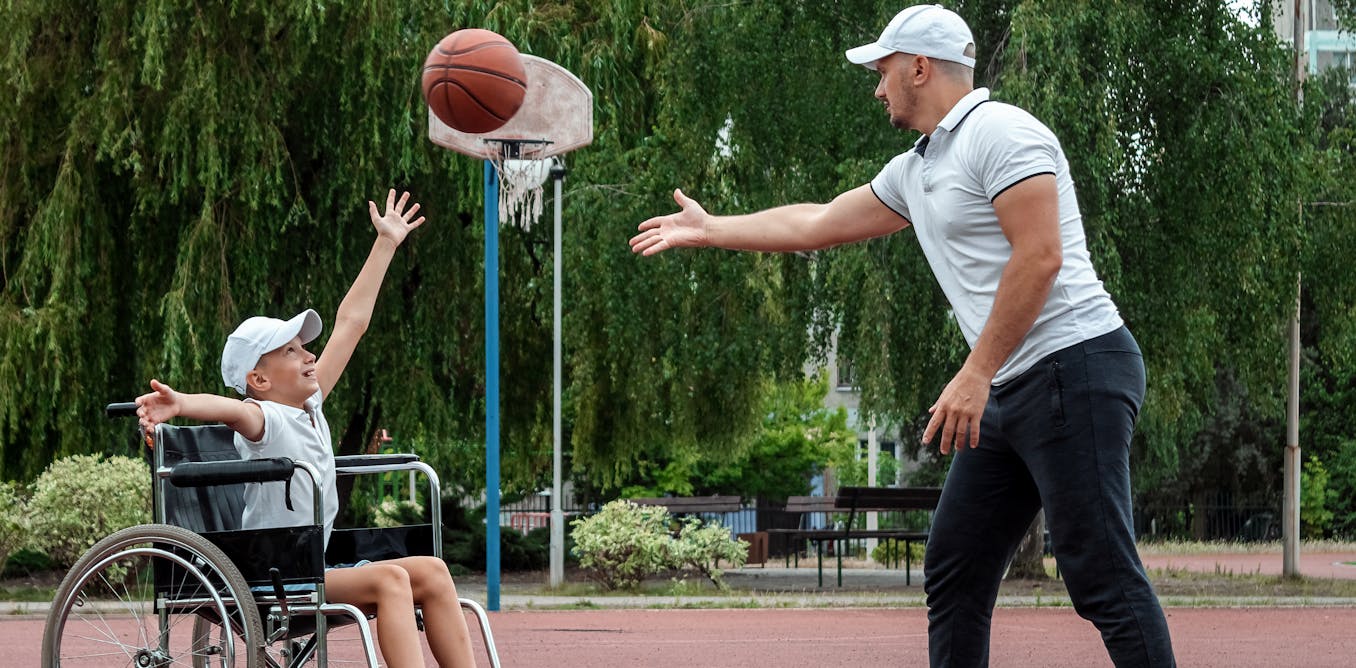Multi-organ imaging demonstrates the heart-brain-liver axis in UK Biobank participants

Deckers, K. et al. Coronary heart disease and risk for cognitive impairment or dementia: Systematic review and meta-analysis. PLoS ONE 12, e0184244 (2017).
Stahl, E. P. et al. Nonalcoholic Fatty Liver Disease and the Heart: JACC State-of-the-Art Review. J. Am. Coll. Cardiol. 73, 948–963 (2019).
Butterworth, R. F. The liver–brain axis in liver failure: neuroinflammation and encephalopathy. Nat. Rev. Gastroenterol. Hepatol. 10, 522–528 (2013).
Anstee, Q. M., Targher, G. & Day, C. P. Progression of NAFLD to diabetes mellitus, cardiovascular disease or cirrhosis. Nat. Rev. Gastroenterol. Hepatol. 10, 330–344 (2013).
Iadecola, C. & Gottesman, R. F. Neurovascular and Cognitive Dysfunction in Hypertension: Epidemiology, Pathobiology, and Treatment. Circ. Res. 124, 1025–1044 (2019).
Lee, L., Pandey, A., Maron, B. & Loscalzo, J. Network medicine in Cardiovascular Research. Cardiovasc. Res. 117, 2186–2202 (2021).
Targher, G., Tilg, H. & Byrne, C. D. Non-alcoholic fatty liver disease: a multisystem disease requiring a multidisciplinary and holistic approach. Lancet Gastroenterol. Hepatol. 6, 578–588 (2021).
Qiu, C. & Fratiglioni, L. A major role for cardiovascular burden in age-related cognitive decline. Nat. Rev. Cardiol. 12, 267–277 (2015).
Lombardi, R., Fargion, S. & Fracanzani, A. L. Brain involvement in non-alcoholic fatty liver disease (NAFLD): A systematic review. Dig. Liver Dis. 51, 1214–1222 (2019).
Ismaiel, A. & Dumitraşcu, D. L. Cardiovascular Risk in Fatty Liver Disease: The Liver-Heart Axis—Literature Review. Front. Med. 6, 202 (2019).
Jokinen, H. et al. Global Burden of Small Vessel Disease-Related Brain Changes on MRI Predicts Cognitive and Functional Decline. Stroke 51, 170–178 (2020).
Nwabuo, C. C. et al. Left ventricular global function index predicts incident heart failure and cardiovascular disease in young adults: The coronary artery risk development in young adults (CARDIA) study. Eur. Heart J. Cardiovasc. Imaging 20, 533–540 (2019).
Jayaswal, A. N. A. et al. Prognostic value of multiparametric magnetic resonance imaging, transient elastography and blood-based fibrosis markers in patients with chronic liver disease. Liver Int 40, 3071–3082 (2020).
Mojtahed, A. et al. Reference range of liver corrected T1 values in a population at low risk for fatty liver disease—a UK Biobank sub-study, with an appendix of interesting cases. Abdom. Radiol. 44, 72–84 (2019).
Beller, E. et al. Hepatic fat is superior to BMI, visceral and pancreatic fat as a potential risk biomarker for neurodegenerative disease. Eur. Radiol. 29, 6662–6670 (2019).
Weinstein, G. et al. Association of nonalcoholic fatty liver disease with lower brain volume in healthy middle-aged adults in the Framingham Study. JAMA Neurol. 75, 97–104 (2018).
Gurholt, T. P. et al. Population-based body–brain mapping links brain morphology with anthropometrics and body composition. Transl. Psychiatry 11, 295 (2021).
VanWagner, L. B. et al. Nonalcoholic fatty liver disease and measures of early brain health in middle-aged adults: The CARDIA study. Obesity 25, 642–651 (2017).
Rovira, A. et al. Decreased white matter lesion volume and improved cognitive function after liver transplantation. Hepatology 46, 1485–1490 (2007).
Jang, H. et al. Non-alcoholic fatty liver disease and cerebral small vessel disease in Korean cognitively normal individuals. Sci. Rep. 9, 1814 (2019).
Petta, S. et al. The Presence of White Matter Lesions Is Associated With the Fibrosis Severity of Nonalcoholic Fatty Liver Disease. Med. (Baltim.) 95, e3446 (2016).
Parisinos, C. A. et al. Genome-wide and Mendelian randomisation studies of liver MRI yield insights into the pathogenesis of steatohepatitis. J. Hepatol. 73, 241–251 (2020).
Dekkers, I. A., Jansen, P. R. & Lamb, H. J. Obesity, Brain Volume, and White Matter Microstructure at MRI: A Cross-sectional UK Biobank Study. Radiology 291, 763–771 (2019).
Poitelon, Y., Kopec, A. M. & Belin, S. Myelin Fat Facts: An Overview of Lipids and Fatty Acid Metabolism. Cells 9, 812 (2020).
Pase, M. P. et al. Association of Aortic Stiffness with Cognition and Brain Aging in Young and Middle-Aged Adults: The Framingham Third Generation Cohort Study. Hypertension 67, 513–519 (2016).
Pase, M. P. et al. Vascular risk at younger ages most strongly associates with current and future brain volume. Neurology 91, e1479 (2018).
Singer, J., Trollor, J. N., Baune, B. T., Sachdev, P. S. & Smith, E. Arterial stiffness, the brain and cognition: A systematic review. Ageing Research Reviews 15, 16–27 (2014).
G, D. et al. Heart and Brain: Complex Relationships for Left Ventricular Dysfunction. Curr. Cardiol. Rep. 22, 72 (2020).
van Hout, M. J. P. et al. Associations between left ventricular function, vascular function and measures of cerebral small vessel disease: a cross-sectional magnetic resonance imaging study of the UK Biobank. Eur. Radiol. 31, 5068–5076 (2021).
Moore, E. E. et al. Increased Left Ventricular Mass Index Is Associated With Compromised White Matter Microstructure Among Older Adults. J. Am. Heart Assoc. 7, e009041 (2018).
Salerno, J. A. et al. Brain atrophy in hypertension: A volumetric magnetic resonance imaging study. Hypertension 20, 340–348 (1992).
Dickie, D. A. et al. Vascular risk factors and progression of white matter hyperintensities in the Lothian Birth Cohort 1936. Neurobiol. Aging 42, 116–123 (2016).
Suzuki, H. et al. Abnormal brain white matter microstructure is associated with both pre-hypertension and hypertension. PLoS ONE 12, e0187600 (2017).
Wassenaar, T. M., Yaffe, K., van der Werf, Y. D. & Sexton, C. E. Associations between modifiable risk factors and white matter of the aging brain: insights from diffusion tensor imaging studies. Neurobiol. Aging 80, 56–70 (2019).
Veldsman, M. et al. Cerebrovascular risk factors impact frontoparietal network integrity and executive function in healthy ageing. Nat. Commun. 11, 4340 (2020).
Tsao, C. W. et al. Left ventricular structure and risk of cardiovascular events: A framingham heart study cardiac magnetic resonance study. J. Am. Heart Assoc. 4, e002188 (2015).
Borges-Canha, M. et al. Association between nonalcoholic fatty liver disease and cardiac function and structure—a meta-analysis. Endocrine 66, 467–476 (2019).
Raisi-Estabragh, Z. et al. Left atrial structure and function are associated with cardiovascular outcomes independent of left ventricular measures: a UK Biobank CMR study. Eur. Heart J. – Cardiovasc. Imaging jeac119, https://doi.org/10.1093/EHJCI/JEAB266 (2021).
Littlejohns, T. J. et al. The UK Biobank imaging enhancement of 100,000 participants: rationale, data collection, management and future directions. Nat. Commun. 11, 2624 (2020).
Miller, K. L. et al. Multimodal population brain imaging in the UK Biobank prospective epidemiological study. Nat. Neurosci. 19, 1523–1536 (2016).
Petersen, S. E. et al. UK Biobank’s cardiovascular magnetic resonance protocol. J. Cardiovasc. Magn. Reson. 18, 8 (2016).
Wilman, H. R. et al. Characterisation of liver fat in the UK Biobank cohort. PLoS ONE 12, e0172921 (2017).
McKay, A. et al. Measurement of liver iron by magnetic resonance imaging in the UK Biobank population. PLOS ONE 13, e0209340 (2018).
Bachtiar, V. et al. Repeatability and reproducibility of multiparametric magnetic resonance imaging of the liver. PloS One 14, e0214921 (2019).
Harrison, S. A. et al. Prospective evaluation of the prevalence of non-alcoholic fatty liver disease and steatohepatitis in a large middle-aged US cohort. J. Hepatol. 75, 284–291 (2021).
Smith, S. M., Alfaro-Almagro, F. & Miller, K. L. UK Biobank – Brain Imaging Documentation https://biobank.ctsu.ox.ac.uk/crystal/crystal/docs/brain_mri.pdf (Date accessed: 29 October 2021) (2020).
Alfaro-Almagro, F. et al. Image processing and Quality Control for the first 10,000 brain imaging datasets from UK Biobank. NeuroImage 166, 400–424 (2018).
van den Heuvel, M. P. & Yeo, B. T. T. A Spotlight on Bridging Microscale and Macroscale Human Brain Architecture. Neuron 93, 1248–1251 (2017).
Smith, S. M. et al. Accurate, robust, and automated longitudinal and cross-sectional brain change analysis. NeuroImage 17, 479–489 (2002).
Prins, N. D. & Scheltens, P. White matter hyperintensities, cognitive impairment and dementia: an update. Nat. Rev. Neurol. 11, 157–165 (2015).
Debette, S., Schilling, S., Duperron, M. G., Larsson, S. C. & Markus, H. S. Clinical Significance of Magnetic Resonance Imaging Markers of Vascular Brain Injury: A Systematic Review and Meta-analysis. JAMA Neurol. 76, 81–94 (2019).
Zhang, H., Schneider, T., Wheeler-Kingshott, C. A. & Alexander, D. C. NODDI: Practical in vivo neurite orientation dispersion and density imaging of the human brain. NeuroImage 61, 1000–1016 (2012).
Taoka, T. et al. White matter microstructural changes in tuberous sclerosis: Evaluation by neurite orientation dispersion and density imaging (NODDI) and diffusion tensor images. Sci. Rep. 2020 101 10, 1–9 (2020).
Venkatesh, A., Stark, S. M., Stark, C. E. L. & Bennett, I. J. Age- and memory- related differences in hippocampal gray matter integrity are better captured by NODDI compared to single-tensor diffusion imaging. Neurobiol. Aging 96, 12–21 ne to (2020).
Jones, D. K., Knösche, T. R. & Turner, R. White matter integrity, fiber count, and other fallacies: The do’s and don’ts of diffusion MRI. NeuroImage 73, 239–254 (2013).
Peterson, R. A. & Cavanaugh, J. E. Ordered quantile normalization: a semiparametric transformation built for the cross-validation era. J. Appl. Stat. 47, 2312–2327 (2020).
Petersen, S. E. et al. Reference ranges for cardiac structure and function using cardiovascular magnetic resonance (CMR) in Caucasians from the UK Biobank population cohort. J. Cardiovasc. Magn. Reson. 19, 1–19 (2017).
Bai, W. et al. Automated cardiovascular magnetic resonance image analysis with fully convolutional networks. J. Cardiovasc. Magn. Reson. 20, 1–12 (2018).
Raisi-Estabragh, Z. et al. Associations of cognitive performance with cardiovascular magnetic resonance phenotypes in the UK Biobank. Eur. Heart J. – Cardiovasc. Imaging jeab075 (2021).
Desai, M. Y. et al. LV Global Function Index Provides Incremental Prognostic Value Over LGE and LV GLS in HCM. JACC Cardiovasc. Imaging 13, 2052–2054 (2020).
Biasiolli, L. et al. Automated localization and quality control of the aorta in cine CMR can significantly accelerate processing of the UK Biobank population data. PLOS ONE 14, e0212272 (2019).
Redheuil, A. et al. Proximal aortic distensibility is an independent predictor of all-cause mortality and incident CV events: The MESA study. J. Am. Coll. Cardiol. 64, 2619–2629 (2014).
Fawns-Ritchie, C. & Deary, I. J. Reliability and validity of the UK Biobank cognitive tests. PLOS ONE 15, e0231627 (2020).
Lyall, D. M. et al. Cognitive Test Scores in UK Biobank: Data Reduction in 480,416 Participants and Longitudinal Stability in 20,346 Participants. PLOS ONE 11, e0154222 (2016).
Craig, C. L. et al. International Physical Activity Questionnaire: 12-Country Reliability and Validity. Med Sci. Sports Exerc 35, 1381–1395 (2003).
The IPAQ group. Guidelines for Data Processing and Analysis of the International Physical Activity Questionnaire (IPAQ) – Short and Long Forms. https://biobank.ndph.ox.ac.uk/ukb/ukb/docs/ipaq_analysis.pdf (Date accessed: 21 October 2021) (2005).
Alfaro-Almagro, F. et al. Confound modelling in UK Biobank brain imaging. NeuroImage 224, 117002 (2021).
R. Core Team. R: A language and environment for statistical computing. R Foundation for Statistical Computing. in R Version 4.0.3 Vienna, Austria. URL https://www.R-project.org/ (2019).
RStudio Team. RStudio: Integrated Development Environment for R. (RStudio, PBC, Boston, MA, 2020). http://www.rstudio.com/.
Rosseel, Y. Lavaan: An R package for structural equation modeling. J. Stat. Softw. 48, 1–36 (2012).







